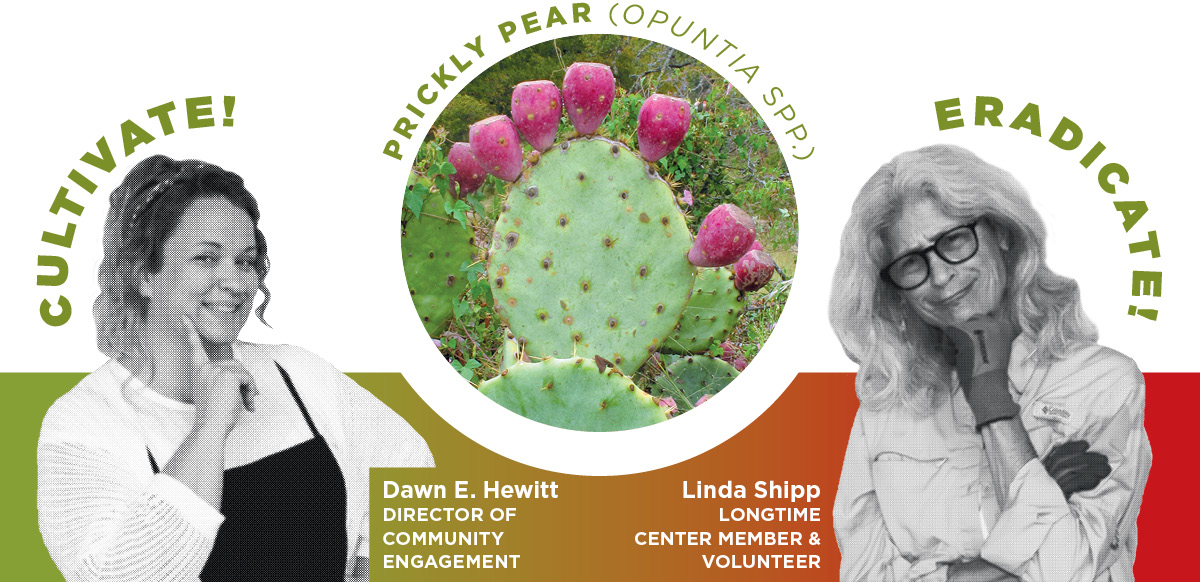Pull It or Plant It: Prickly Pear

DH: Who doesn’t love a good story? Opuntia species, commonly known as prickly pear cacti, sure have one! The history of this superfood dates back millennia, rooted in Mexican culture and cuisine.
If you look closely at the Mexican flag, you might notice an eagle with a snake firmly snatched in its talons, sitting atop a blooming prickly pear. This image illustrates the legend of the god Huitzilopochtli guiding the Aztec people to the place that became known as Tenochtitlán — present day Mexico City. The name translates from Nahuatl to mean “the prickly pears growing among the rocks.”
The prickly pear cactus played a central role in the diet of the region’s indigenous peoples, with evidence of it being consumed as early as 65 B.C.E. With its wealth of antioxidants, vitamins, minerals and amino acids, it is no wonder prickly pear has resurged in modern cuisines and diets.
It’s got history and health! The prickly pear signifies Texas’ close ties to Mexico and tribes that formed the foundation of Tex-Mex culture. So I say plant it, cultivate it, eat it and enjoy it! Now where’s my prickly pear margarita?
LS: When I agreed to this argument, I was looking at all the beautiful things coming back to life in my xeriscaped yard after our winter storm — plus a big ugly prickly pear stump. Prickly pears have very deep roots and are extremely hard to remove, so this one has become a literal thorn in my side.
When healthy, they can easily grow out of bounds. And trying to “pop the ears off,” even with heavy gloves, has left plenty of unwelcome glochids in my hands.
Speaking of glochids, another downside is that the spineless species (O. ellisiana) is not really spineless, which can be very dangerous for kids (or pets) who might not know to avoid them. (Here’s a pro tip: A thin layer of white Elmer’s glue, dried, will help pull fine prickles out of fingers.)
They produce tasty treats, yes, but livestock, particularly sheep, can become habitual grazers, leading to ulcerations, indigestion and bacterial infections in mouths and gastrointestinal tracts.
Finally, snails seem to love prickly pears, and I could do with fewer snails in my garden. So I say pull it — but also good luck with that!
ON THE OTHER HAND …
DH: No hugging and caressing here. Love it from a distance and take very specific precautions when preparing nopales (paddles) and tunas (fruit). It’s worth the effort; just remember, do not pat the cactus!
LS: This plant has a wonderful history. It needs little water and can handle lots of sun, which is great for Texas. It’s also a noteworthy food source and has been known to treat diabetes and high cholesterol.
